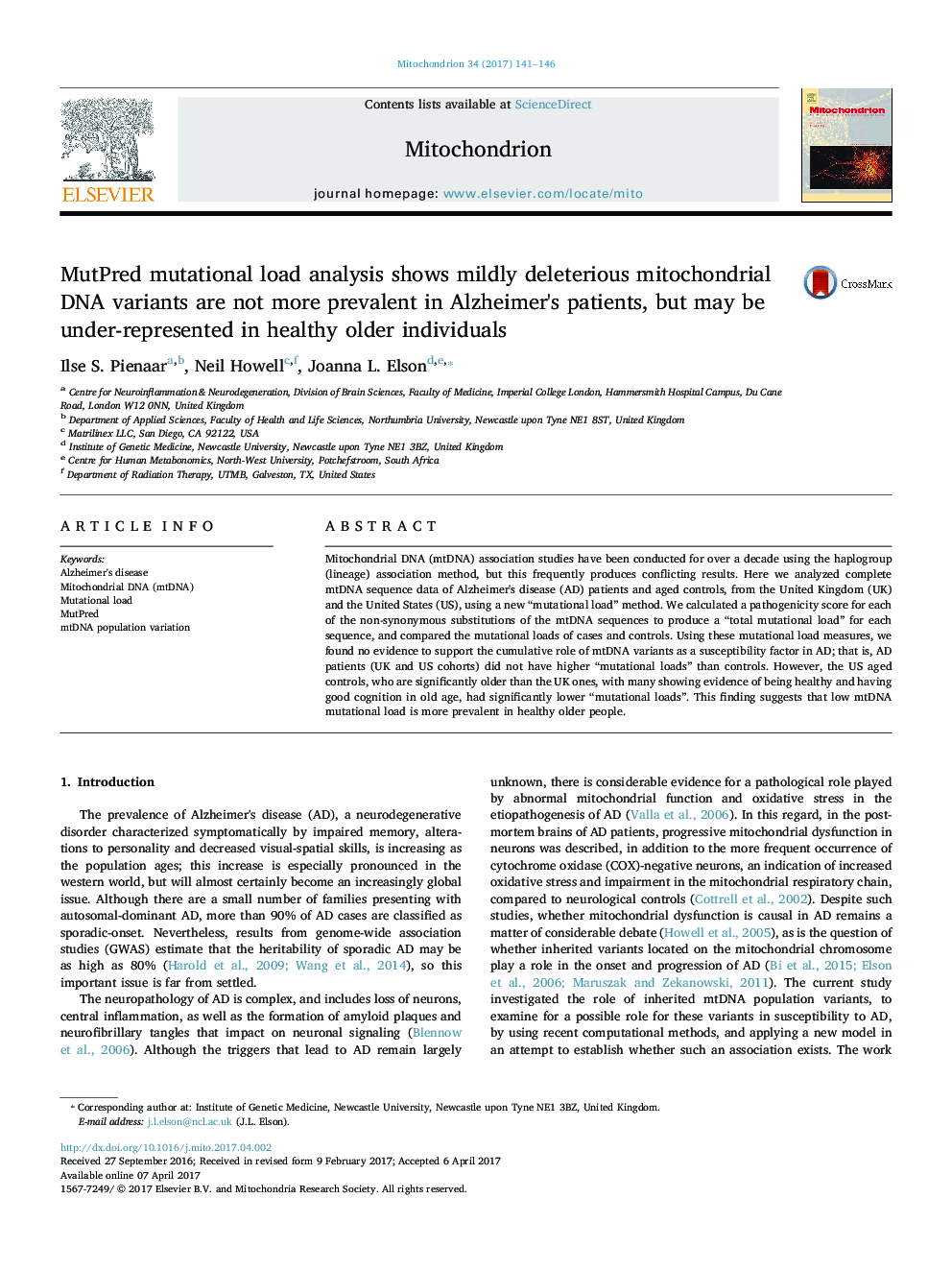| Article ID | Journal | Published Year | Pages | File Type |
|---|---|---|---|---|
| 5519702 | Mitochondrion | 2017 | 6 Pages |
â¢A novel way to consider mtDNA variation in complex disease is presented.â¢Termed “mutational load” its uses a more powerful statistical frame-work than haplogroup association studies.â¢Controls and AD patients had similar mtDNA “mutational loads”.â¢The data did suggests that low mutational load might associate with healthy aging.
Mitochondrial DNA (mtDNA) association studies have been conducted for over a decade using the haplogroup (lineage) association method, but this frequently produces conflicting results. Here we analyzed complete mtDNA sequence data of Alzheimer's disease (AD) patients and aged controls, from the United Kingdom (UK) and the United States (US), using a new “mutational load” method. We calculated a pathogenicity score for each of the non-synonymous substitutions of the mtDNA sequences to produce a “total mutational load” for each sequence, and compared the mutational loads of cases and controls. Using these mutational load measures, we found no evidence to support the cumulative role of mtDNA variants as a susceptibility factor in AD; that is, AD patients (UK and US cohorts) did not have higher “mutational loads” than controls. However, the US aged controls, who are significantly older than the UK ones, with many showing evidence of being healthy and having good cognition in old age, had significantly lower “mutational loads”. This finding suggests that low mtDNA mutational load is more prevalent in healthy older people.
